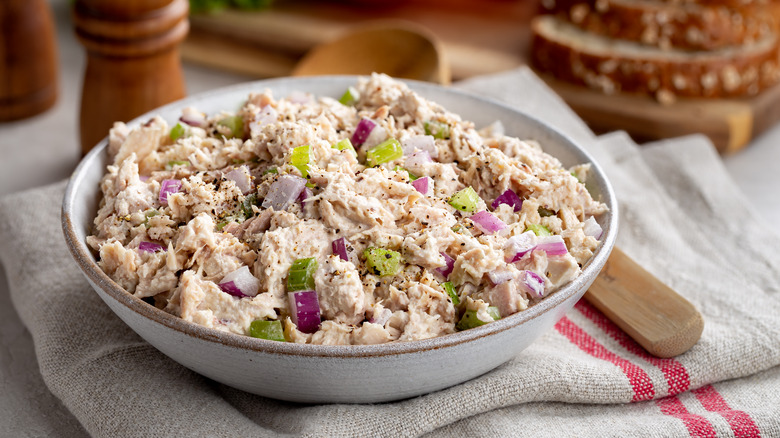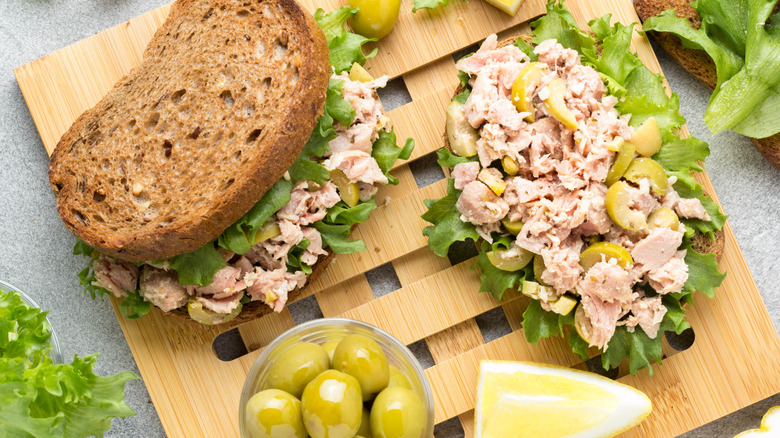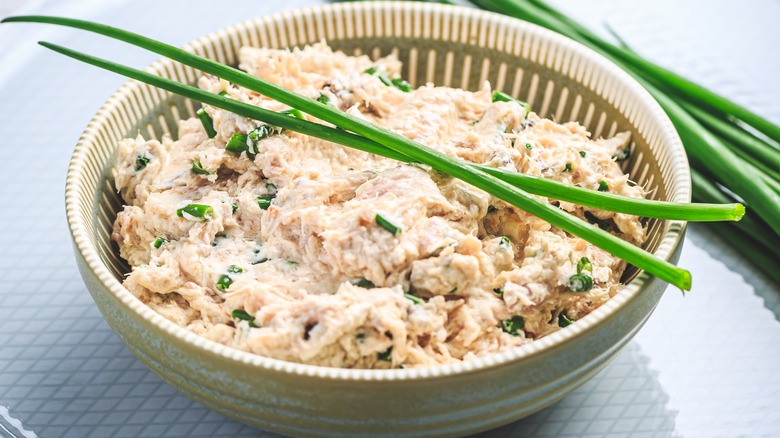The Biggest Mistake You're Making With Tuna Salad
Tuna salad is a simple go-to meal that is totally craveable when done right. However, it's usually relegated to a basic lunch, thrown together quickly with little regard for balance or quality ingredients. Why does this dish so often fall flat when made at home? Food Republic spoke to Michael Feinberg, executive chef at Around the Clock Diner in East Rutherford, New Jersey, to get his take on why your tuna salad is often not as good as it could be.
In Feinberg's opinion, skipping out on acidic ingredients is a huge mistake. "With tuna from a can and mayonnaise from a jar, most tuna salads miss freshness," he explains, and acid helps to bring everything together. Tangy and bright ingredients create a delicious contrast and introduces vibrancy to the richer ingredients. It provides invaluable balance to a dish largely made up of mild, sweet, and fatty components.
Feinberg tells home cooks, "don't be afraid to add a squeeze of lemon to add freshness to the salad ... Or you can add a touch Dijon mustard, which also adds acid." Vinegar is another obvious choice. Opt for a bottle that doesn't introduce too much sweetness, since many mayonnaise brands include some sugar. White wine, red wine, distilled white, or apple cider vinegar are all good to use.
Other ways to introduce acid to tuna salad
Acidic ingredients are necessary to really round out your tuna salad's profile, and they also provide an opportunity to add interesting flavors to your standard recipe. Many ingredients with a notable tang can give tuna salad the life it needs. Michael Feinberg recommends Dijon mustard, but different kinds of mustard can also work to add tang, as well as a spicy burn, depending on how strong the condiment is.
When perusing your refrigerator, you might find more punchy and acidic items, like preserved lemons, pickled jalapeños, dill pickles, banana peppers, olives, capers, or hot cherry peppers. Finely dice any of these for mixing into your salad, add a splash of the brine to the tuna, or do both. After you incorporate these additions, give your tuna a taste before adding salt, so you don't accidentally oversalt your salad.
A creamy ingredient swap for tuna salad without mayo is another way to invite acid to the party. Replace a portion of the mayo with something tangier, like Greek yogurt, sour cream, or labneh.
More tuna salad tips
You may be thinking that a salad like this is better if you store it in the fridge and let the flavors meld for a couple of days. However, Michael Feinberg says, "I think the sweet spot is somewhere in between." You can leave it to rest in the fridge if you prefer it that way, but it may need some adjustments once you're ready to eat it.
In Feinberg's opinion, the temperature of your salad really matters. If you make tuna salad with cold mayo and eat it right away, Feinberg thinks the balance is just about perfect, but if you make a batch in advance and store it in the fridge, he suggests letting the salad rest at room temperature just for a bit. It takes chill off the salad, so that you can fully taste all the flavors that may otherwise be dulled by the cold.
The flavors of any tuna salad also soften quite a bit after resting in the fridge. Feinberg says that adding another squeeze of fresh lemon or lime juice, and also some freshly-cracked black pepper, can add sharpness and tanginess back to the salad. Dig in, and you certainly won't be disappointed.



